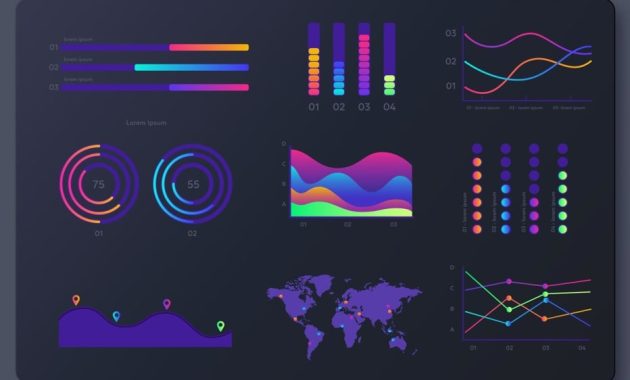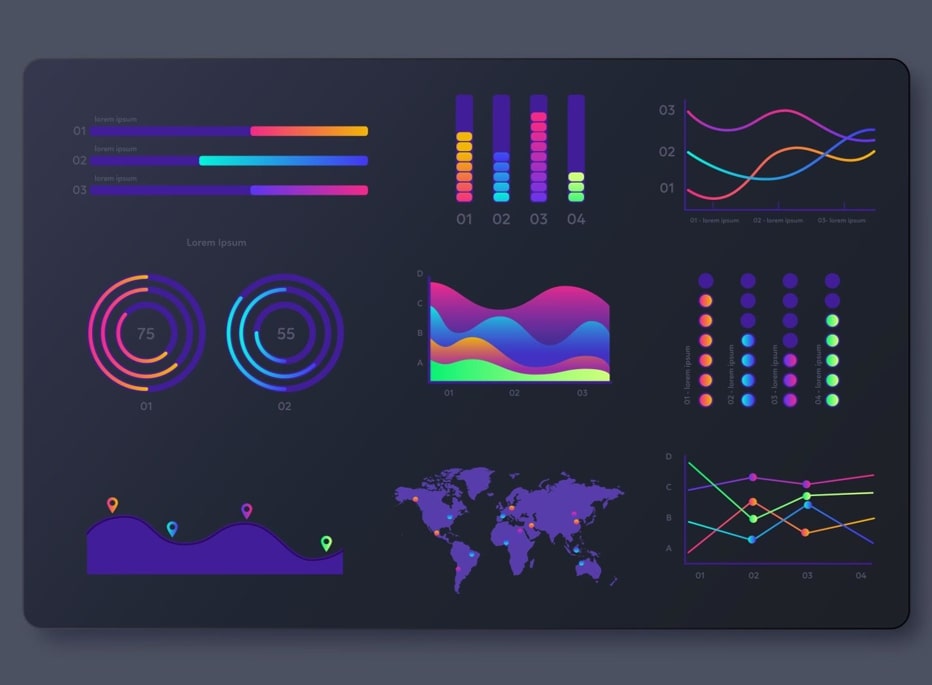
Business Intelligence Tools to Query Like Conversing: A New Era of Data Interaction
The world of data analytics is undergoing a seismic shift. The traditional, often clunky, methods of extracting insights are giving way to more intuitive and accessible approaches. Leading this charge are Business Intelligence (BI) tools that allow users to query data in a conversational manner. This means interacting with data as if you were having a conversation, asking questions in plain language and receiving immediate, understandable answers. This article delves into this exciting trend, exploring the capabilities of these innovative tools, their benefits, and the future they promise for data-driven decision-making.
The rise of these conversational BI tools is not merely a technological advancement; it represents a fundamental change in how we interact with information. Previously, accessing and interpreting data often required specialized skills in SQL, data modeling, or complex reporting tools. Now, anyone, regardless of their technical expertise, can leverage the power of data to make informed decisions. This democratization of data access is empowering businesses across all sectors, from small startups to multinational corporations.
Understanding Conversational BI: A Paradigm Shift
At its core, conversational BI leverages Natural Language Processing (NLP) and Machine Learning (ML) to interpret user queries and generate relevant insights. Users can simply type or speak their questions in everyday language, and the tool translates these into complex database queries. The results are then presented in an easily digestible format, often through interactive dashboards, charts, and graphs. This eliminates the need for technical intermediaries and accelerates the process of data analysis.
This paradigm shift is driven by several key factors. Firstly, there’s the increasing volume and complexity of data. Businesses are now generating vast amounts of data from various sources, making traditional methods of analysis inefficient. Secondly, there’s a growing demand for faster, more agile decision-making. In today’s fast-paced business environment, waiting weeks for a report is simply not an option. Finally, there’s the need to empower a wider range of users to make data-driven decisions. Conversational BI tools bridge the gap between data and decision-makers, regardless of their technical background.
Key Features and Capabilities of Conversational BI Tools
The functionality of these tools is impressive. They offer a range of features designed to simplify data analysis and improve user experience. Here are some of the most common capabilities:
- Natural Language Querying: This is the cornerstone of conversational BI. Users can ask questions in plain language, such as “What were our sales in Q1?” or “Show me the top-performing products.”
- Automated Data Exploration: The tools can automatically identify trends, patterns, and anomalies in the data, proactively providing insights that users might not have discovered on their own.
- Interactive Dashboards and Visualizations: Data is presented in a visually appealing and interactive format, allowing users to easily explore the data and gain a deeper understanding of the underlying trends.
- Data Preparation and Cleansing: Some tools can automate the process of data preparation, cleansing, and transformation, reducing the time and effort required to get data ready for analysis.
- Integration with Various Data Sources: These tools typically integrate with a wide range of data sources, including databases, cloud platforms, and spreadsheets.
- Collaboration and Sharing: Many tools offer features that facilitate collaboration and sharing of insights, allowing teams to work together more effectively.
Benefits of Using Conversational BI Tools
The advantages of implementing conversational BI tools are numerous and far-reaching. They can significantly improve business performance and empower organizations to make better decisions. Here are some of the key benefits:
- Improved Data Accessibility: Conversational BI tools democratize data access, making it easier for anyone to access and analyze data.
- Faster Time to Insights: By eliminating the need for complex queries and manual analysis, these tools accelerate the process of deriving insights from data.
- Enhanced Decision-Making: With faster access to relevant information, businesses can make more informed and timely decisions.
- Increased Efficiency: Automation of data preparation and analysis tasks frees up valuable time and resources, allowing analysts to focus on more strategic initiatives.
- Better Collaboration: Features like interactive dashboards and sharing capabilities promote better collaboration and communication among team members.
- Cost Savings: By reducing the need for specialized data analysts and streamlining the analysis process, these tools can lead to significant cost savings.
Examples of Conversational BI Tools
Several vendors are leading the way in conversational BI. Their tools offer a range of features and capabilities to meet diverse business needs. Here are some notable examples:
- Tableau: Tableau is a popular BI platform that offers natural language querying capabilities through its Ask Data feature. Users can type questions in plain language and receive interactive visualizations of the data.
- Power BI: Microsoft’s Power BI also includes natural language querying, allowing users to ask questions and generate reports. The Q&A feature is a standout.
- Looker: Looker, now part of Google Cloud, provides a data exploration platform with conversational features. It allows users to explore data through natural language and create interactive dashboards.
- ThoughtSpot: ThoughtSpot is a dedicated conversational analytics platform. It is built around the concept of search-driven analytics.
- Sisense: Sisense offers a platform with NLP capabilities. This allows users to ask questions and receive immediate answers from their data.
Each tool has its own strengths and weaknesses, so it is important to evaluate your specific needs before making a decision. Consider factors such as ease of use, features, integration capabilities, and pricing.
Implementing Conversational BI: Best Practices
Successfully implementing conversational BI requires careful planning and execution. Here are some best practices to follow:
- Define Clear Objectives: Before implementing any BI tool, it is essential to define your business objectives. What questions do you want to answer? What decisions do you want to make?
- Choose the Right Tool: Select a tool that meets your specific needs and requirements. Consider factors such as ease of use, features, integration capabilities, and pricing.
- Prepare Your Data: Ensure that your data is clean, accurate, and well-organized. This is crucial for the success of conversational BI.
- Train Your Users: Provide adequate training to users so they can effectively leverage the tool’s features and capabilities.
- Start Small and Iterate: Begin with a pilot project and gradually expand your implementation as you gain experience and confidence.
- Monitor and Evaluate: Continuously monitor the tool’s performance and evaluate its impact on your business. Make adjustments as needed.
The Future of Conversational BI
The future of conversational BI looks bright. As NLP and ML technologies continue to advance, these tools will become even more sophisticated and powerful. We can expect to see the following trends:
- More Advanced NLP: Tools will be able to understand more complex queries and provide more accurate and nuanced insights.
- Increased Automation: More tasks will be automated, such as data preparation, report generation, and anomaly detection.
- Personalized Insights: Tools will be able to personalize insights based on individual user preferences and roles.
- Integration with AI: Conversational BI tools will integrate more seamlessly with other AI technologies, such as chatbots and virtual assistants.
- Wider Adoption: As these tools become more user-friendly and affordable, they will be adopted by a wider range of organizations.
The evolution of Business Intelligence tools to query like conversing signifies a major shift in how we interact with data. This change will empower more users, accelerate decision-making, and drive better business outcomes. The ability to interact with data in a conversational manner will revolutionize the field. The use of Business Intelligence tools will become more user-friendly. By embracing Business Intelligence tools to query like conversing, businesses can unlock the full potential of their data and gain a competitive advantage. The future of Business Intelligence tools is bright. These tools are changing the way businesses approach data analysis. The trend of using Business Intelligence tools will continue to grow. These Business Intelligence tools represent a significant leap forward. Using Business Intelligence tools to query like conversing is a game-changer. Business Intelligence tools are essential for modern businesses. The power of these Business Intelligence tools is undeniable. These are the best Business Intelligence tools available.
Conclusion
Conversational BI tools represent a significant step forward in the evolution of data analytics. By making data more accessible and easier to understand, these tools are empowering businesses to make better decisions, faster. As technology continues to advance, we can expect even more exciting developments in this field. The future of data analysis is undoubtedly conversational, and organizations that embrace this trend will be well-positioned to thrive in the data-driven world. [See also: Related Article Titles]

